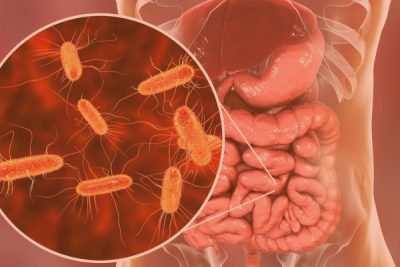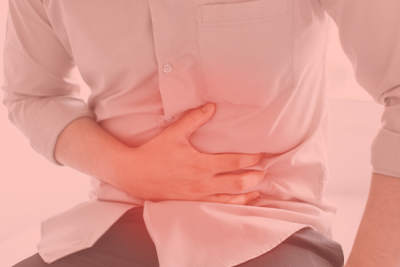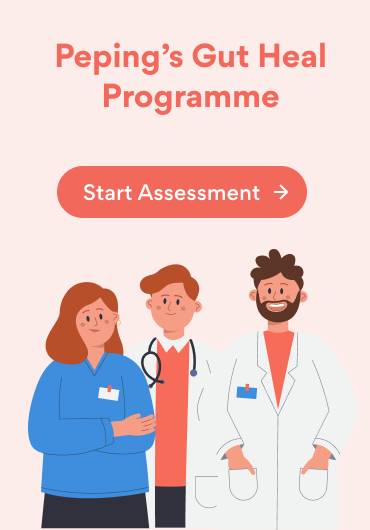GERD (gastroesophageal reflux disease, often known as chronic acid reflux) is a disorder in which acid-containing contents from your stomach seep back into the esophagus, the tube that connects your neck to your stomach.
Acid reflux occurs when a valve at the rear-end of your esophagus, known as the lower esophageal sphincter, fails to seal correctly as food enters your stomach. Acid backwash then runs up your esophagus and into your throat and mouth, leaving you with a sour taste.
Almost everyone experiences acid reflux at some point in their lives. It is very natural to have acid reflux and heartburn on occasion. However, if you experience acid reflux or heartburn more than two times in a week for several weeks, use heartburn medicines and antacids on a regular basis, and your symptoms persist, you may have GERD.
Causes of GERD
Food travels from the neck to the stomach via the esophagus when you eat. The lower esophagus has a ring of muscle fibers, called the lower esophageal sphincter (LES), that prevents ingested food from traveling back up.
When this muscle ring does not seal completely, stomach contents might seep into the esophagus. This is known as gastroesophageal reflux with symptoms of reflux possible. The lining of the esophagus can also be damaged by harsh stomach acids.
Risk factors for GERD
The following are risk factors for GERD or an acid reflux:
- Alcohol consumption
- Hiatal hernia (a disorder in which a portion of the stomach protrudes above the diaphragm, a muscle that divides the chest and abdominal chambers)
- Obesity
- Pregnancy
- Scleroderma
- Using tobacco or smoking
- Lying down within three hours of eating
- Pregnancy can induce or worsen heartburn and gastroesophageal reflux.
Certain medications, for example, might also induce symptoms.
- Anticholinergics (such as sea sickness medication)
- Beta-blockers are used to treat high blood pressure or heart disorder.
- Bronchodilators are used to treat asthma and other lung illnesses.
- Calcium channel blockers are used to treat high blood pressure.
- Dopamine-stimulating medications for Parkinson’s disease
- Progestin for menstruation irregularities or birth control
- Sedatives used to treat insomnia or anxiety
- Theophylline (used to treat asthma and other lung problems)
- Antidepressants tricyclic
If you suspect that one of your medications is causing heartburn, consult your doctor. Never modify or discontinue a medication without first consulting with your healthcare professional.
What are the signs and symptoms of GERD?
GERD affects various people in different ways. The following are the most prevalent symptoms:
- Heartburn.
- Food returns to your throat or mouth from the esophagus, causing regurgitation.
- The sensation of food being stuck in your throat.
- Coughing.
- Chest ache.
- Having difficulty swallowing.
- Vomiting.
- Hoarseness and sore throat.
Infants and children can suffer from GERD symptoms such as:
- Small bouts of vomiting occur often.
- Excessive weeping and aversion to eating (in newborns and infants).
- Other respiratory (breathing) problems.
- Acidic sour flavor, especially while lying down.
- Hoarse throat
- A choking sensation.
- Poor breath.
- Sleeping difficulties after feeding, particularly in newborns.
Diagnostic tests for GERD
Tests to diagnose GERD or acid reflux include:
- Manometry
- Endoscopy
- Barium test
- Blood tests to check pH levels 24 hours a day, seven days a week
Manometry
- Manometry measures the pressure in your esophagus to determine how efficiently the muscular ring, or LES, at the end of your esophagus is operating.
- This can help rule out other possible reasons for your symptoms and evaluate whether surgery is appropriate.
- A tiny tube will be inserted up through the nose and then down through the esophagus during the surgery. The tube has pressure sensors that detect oesophageal pressure.
Endoscopy
- An endoscopy is a technique that involves inspecting the inside of your body with an endoscope, which involves a flexible tube equipped with a light and camera at its end.
- The endoscope will be placed into your mouth and down your throat with care. Although the surgery is normally performed while you are awake, you may be administered a sedative to assist you in relaxing.
- The camera can detect if the surface of your esophagus (gullet) has been injured due to stomach acid, albeit this does not occur in all GERD patients.
Barium meal or barium swallow
- A barium swallow, often known as a barium meal, is a test used to evaluate your swallowing abilities and detect any blockages or irregularities in your esophagus.
- You are given a barium solution before having X-rays taken. Barium is a non-toxic chemical that appears plainly on X-rays as it goes through your digestive tract.
pH monitoring 24 hours a day, 7 days a week
- If nothing is observed during an endoscopy, it may be essential to evaluate the acidity level (pH) in your esophagus to verify a GERD diagnosis.
- Over the course of 24 hours, the acidity level is monitored using a tiny tube carrying a sensor that is passed up through the nose and down via the esophagus. This is typically linked to a recording device worn around your waist.
- You will be requested to press record every time you realize the occurrence of your symptoms and to keep a journal of your symptoms. To achieve an accurate result, you should eat regularly throughout the exam.
Examinations of blood
A blood test is often performed to screen for anemia, which might be a symptom of internal bleeding.
Complications due to GERD
A multitude of issues may arise as a result of long-term gastroesophageal reflux disorder.
Ulcers of the esophagus
- The stomach acid that seeps into the esophagus in persons with GORD can develop oesophagitis, which can lead to ulcer formation.
- These ulcers can bleed, causing discomfort and making swallowing difficult.
- Proton pump inhibitors (PPIs), which are used to treat GORD, can help ulcers heal by limiting the amount of acid that escapes into the esophagus.
Esophagitis
- Esophagitis is the irritation and inflammation caused by stomach acid in the esophageal lining.
- Esophagitis can cause esophageal ulcers, heartburn, chest discomfort, bleeding, and swallowing difficulties.
Oesophageal scarring and narrowing
- The esophagus can become damaged and constricted as a result of repeated stomach acid injury.
- If this occurs, surgery to enlarge the esophagus with a tiny balloon or other widening device may be advised.
Esophageal rings
These are aberrant tissue rings or folds that occur in the bottom lining of the esophagus. These rings of tissue can restrict the esophagus and make swallowing difficult.
Barrett’s esophagus
It is a disorder in which the cells lining the esophagus are damaged by stomach acid and alter to resemble those lining the small intestine. Although this is an uncommon illness with no symptoms, it might raise your chance of getting esophageal cancer.
Strictures
Sometimes the injured lining of the esophagus scars, causing the esophagus to narrow. These strictures can make eating and drinking difficult by blocking food and fluids from reaching the stomach.
Esophageal cancer
There are two forms of cancer that develop in the esophagus. Adenocarcinoma often develops in the lower esophagus. This kind can arise as a result of Barrett’s esophagus. Squamous cell carcinoma starts in the lining cells of the esophagus. This malignancy often affects the upper and middle esophagus.
Oesophageal cancer symptoms include:
- swallowing difficulties unexplained weight loss
- chronic indigestion hoarseness a persistent cough and/or bloody cough vomiting
Speak with your doctor if you have difficulty swallowing or any other strange or persistent symptoms. If the cancer is detected early, surgery to remove it can be performed.
How acid reflux and GERD may harm your throat?
Frequent heartburn or GERD may also harm the upper neck in addition to possibly injuring the lower esophagus. If stomach acid gets all the way up into the end of the throat or the nasal passage, your throat could be harmed. This disorder is known as laryngopharyngeal reflux (LPR).
LPR is often known as “silent reflux” since it does not usually display symptoms that people are aware of. Individuals with GERD should be tested for LPR to avert potential throat or voice damage. LPR symptoms may include the following:
- hoarseness
- choking episodes chronic throat clearing feeling of a “lump” in the throat persistent cough or cough that wakes you up
- Problems with “rawness” in the throat voice (especially in singers or voice professionals)
Treatment of GERD
Medication that does not require a prescription
- Antacids that reduce stomach acid: Calcium carbonate antacids, such as Mylanta, Rolaids, and Tums, may give immediate relief. However, antacids alone will not repair an irritated esophagus caused by stomach acid. Overusage of certain antacids might result in adverse effects such as diarrhea or, in rare cases, renal issues.
- Medications that lower acid production: Famotidine (Pepcid AC), Cimetidine (Tagamet HB), and nizatidine (Axid AR) are examples of histamine (H-2) blockers. H-2 blockers do not operate as rapidly as antacids, but they give prolonged comfort and may reduce stomach acid production for up to 12 hours. Prescriptions are required for stronger versions.
- Medications that inhibit acid production and heal the esophagus: These drugs, known as proton pump inhibitors, are more powerful acid blockers than H-2 blockers and give injured esophageal tissue time to repair. Lansoprazole (Prevacid 24 HR), omeprazole (Prilosec OTC), and esomeprazole (Nexium 24 HR) are nonprescription proton pump inhibitors.
Medications on prescription
Prescription-strength GERD therapies include:
- Proton pump inhibitors: Esomeprazole (Nexium), omeprazole (Prilosec), lansoprazole (Prevacid), pantoprazole (Protonix), rabeprazole (Aciphex), and dexlansoprazole (Dexilant) are examples of these. Although these drugs are normally well tolerated, they may produce diarrhea, headaches, nausea, or, in rare cases, low vitamin B-12 or magnesium levels.
- H-2 blockers: Prescription-strength famotidine and nizatidine are some examples. These drugs’ side effects are often minimal and readily tolerated.
GERD can generally be treated with medication rather than surgery or other interventions. However, if drugs do not assist or you prefer to avoid long-term pharmaceutical use, your doctor may advise you for surgeries for:
- Fundoplication: To tighten the muscle and prevent reflux, the surgeon wraps the top of your stomach over the lower esophageal sphincter. A minimally invasive (laparoscopic) method is typically used for fundoplication. The upper section of the stomach might be wrapped completely (Nissen fundoplication) or partially. The Toupet fundoplication is the most common partial operation. Your surgeon will advise you on the best kind for you.
- The LINX device: A ring of small magnetic beads is placed around the stomach-esophagus junction. The magnetic attraction among the beads is powerful enough to keep the junction closed against acid reflux but weak enough to enable food to flow through. The LINX device is implantable through minimally invasive surgery. Airport security or magnetic resonance imaging are unaffected by the magnetic beads.
- TIF or transoral incisionless fundoplication: The lower esophageal sphincter is tightened using polypropylene fasteners to create a partial wrap across the lower esophagus. TIF is conducted through the mouth using an endoscope and does not need a surgical incision. Its benefits include fast recovery time and high tolerance. TIF is not a possible surgery if you have a big hiatal hernia. TIF, on the other hand, maybe feasible if paired with laparoscopic hiatal hernia repair.
How can I avoid GERD (chronic acid reflux) symptoms?
Here are some ideas to help you avoid GERD symptoms:
- Achieve and keep a healthy weight.
- Eat modest, regular meals rather than large, three-course dinners a few times a day.
- Reduce your fat intake by cutting back on butter, salad dressings, gravy, meats, and dairy products like sour cream, cheese, and whole milk.
- Sit or stand upright while eating and for 45 to 60 minutes thereafter.
- Eat nothing before going to bed. Go to bed at least three hours after eating.
- Avoid wearing garments that are too tight around the waist. They have the ability to crush your stomach and drive acid up into your esophagus.
- When sleeping, use wooden blocks beneath the bedposts to elevate the head-side of the bed by six to eight inches. Extra pillows are ineffective.
- Quit smoking.
- Acid-reducing drugs may be prescribed by your doctor. Take them exactly as prescribed.
- Eliminate potential trigger foods.
Takeaway
Gastroesophageal reflux disease (GERD) is a disorder in which the contents of the stomach seep backward into the esophagus (food pipe). Food passes from your mouth to your stomach via your esophagus. GERD can inflame the food pipe, resulting in heartburn and other symptoms.
GERD symptoms include heartburn and a bad taste in the back of the mouth. For some, it may be a little annoyance, but for some, it can be a more serious, life-long issue.
GERD is frequently treatable with self-help and medication. Surgery to fix the condition is sometimes required.













